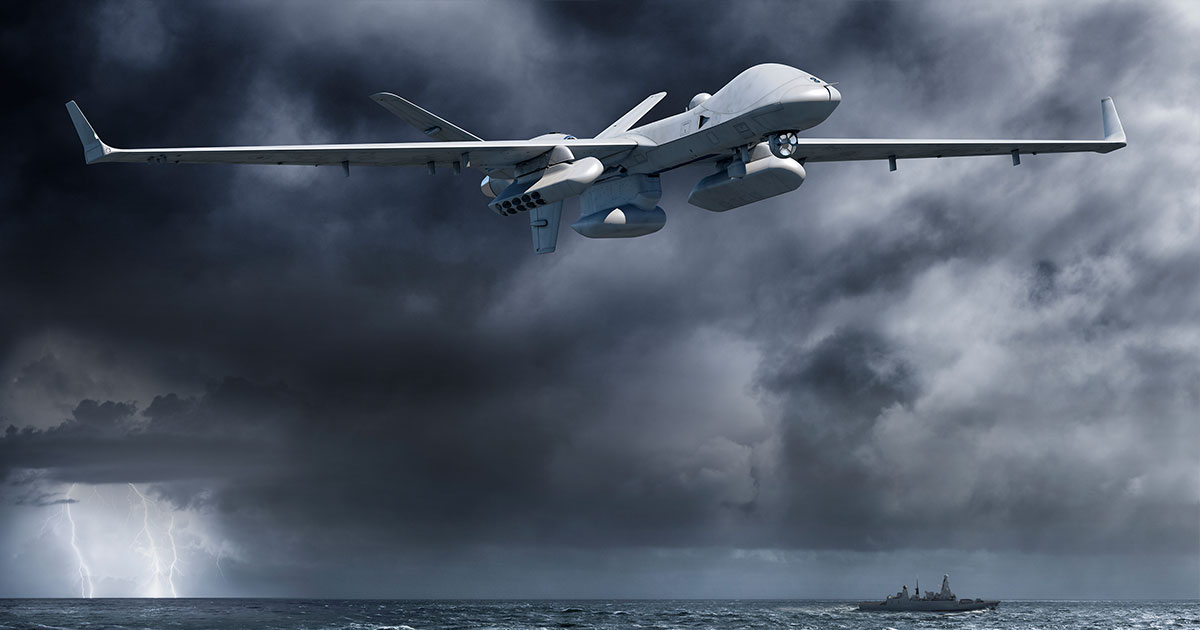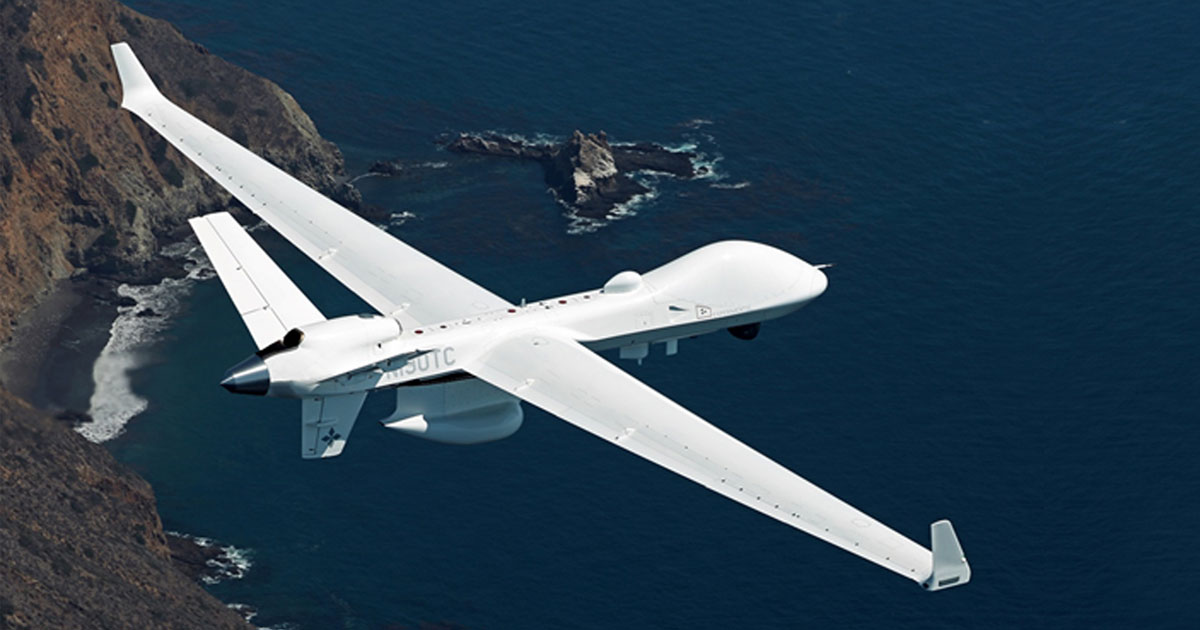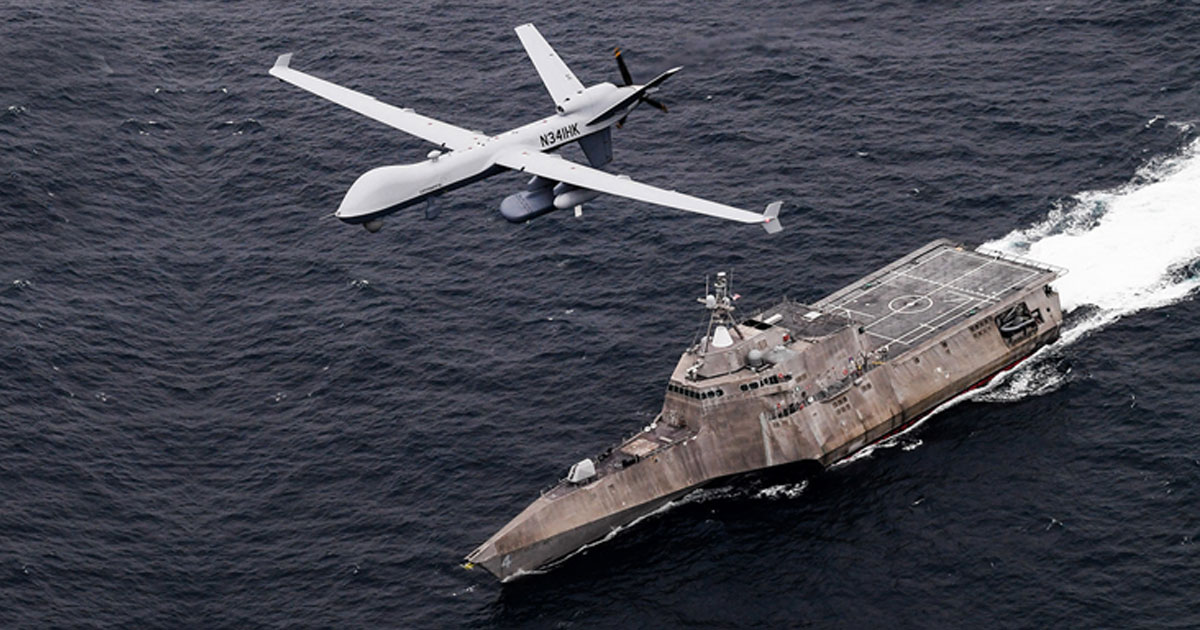
SeaGuardian: Cost Effective Surveillance for the Vast Maritime Domain
The MQ-9B SeaGuardian has changed the game in maritime domain awareness. It’s the first unmanned aerial system of its kind that can search the ocean surface and the depths in support of naval intelligence, surveillance and reconnaissance.
Pete Yelle, a former longtime U.S. naval aviator, now serves as strategic development manager at General Atomics Aeronautical Systems, Inc. Yelle talked about what makes the SeaGuardian so different from other aircraft available today and everything that has come before.
Navies always have needed to know what’s on the sea, or under it. Why is there so much growing interest in this UAS now?
Yelle: SeaGuardian does so many things at once, so well, in a way nothing has before. It can see, optically, with its electro-optical infrared sensor, as well as through haze or smoke with its synthetic aperture radar. It also can scan a wide area with the long-range maritime surface search radar. It has onboard systems that collect signals intelligence and communications intelligence. It can take on any number of other payloads – including a subsurface acoustic processor that allows it to detect and track submarines. The aircraft offers all this at about a third of the price of other larger, high-altitude maritime UAS and at a major cost savings compared to a manned, multi-engine, maritime patrol aircraft. MQ-9B also is incredibly versatile because of its ability to operate in civil airspace.
What does that mean, and how does it help the aircraft?
Yelle: MQ-9B is the only UAS designed to be certifiable in order to operate in non-segregated airspace – that means it can fly in the same box of sky as airliners, for example, or civil aircraft. So rather than needing to seek special authorization for a corridor in order to launch a UAS, operators can just “file and fly,” as pilots say – get the aircraft airborne, transit through normal airspace and then do the mission. GA-ASI’s proprietary detect and avoid system is what makes possible the safe execution of manned and unmanned flight in busy airspace. It’s on track to be certified by the Defense Department and the Federal Aviation Administration.

Does that mean SeaGuardian can operate from more airfields than other UAS?
Yelle: Yes. Let’s say you wanted to take off from someplace like Andersen AFB in Guam and fly through some of the same airspace in the area that is used by both manned U.S. military and commercial aircraft. You could go ahead and do that, and then get out over the ocean to conduct a mission. MQ-9B’s greater wingspan also means it can handle many more airfields, including with shorter runways – that complicates problems for an adversary, because the aircraft can takeoff from A, fly to B, refuel, take off and fly to C, then D – and so on. It doesn’t necessarily need to return to the same base. That makes it more difficult to anticipate or counter and gives more options to its users.
You mentioned SeaGuardian taking off for a long mission over the ocean. These aircraft can fly for more than 30 hours. Are they equipped to handle the maritime environment?
Yelle: Yes. It’s an all-weather capable aircraft. It has an electro-expulsive de-icing system to protect its control surfaces from surface ice, engine-bled air for engine anti-ice and pitot-static systems, copper wiring for lightning protection and weatherization seals and damage-tolerant radomes. The detect and avoid system also has a weather detection mode to see thunderstorms in the distance to avoid inadvertent flight into severe weather.
What could naval commanders do with an aircraft purpose-built to operate over the ocean for such long missions?
Yelle: You name it: Tracking surface contacts. Serving as a communications relay. Providing long-range targeting for a distant ship or the entire strike group. Providing early warning for those forces. Working in concert with other UAS, other aircraft, other units, to create a big sensor network. Looking for submarines.

MQ-9B can hunt for submarines? How?
Yelle: It’s the only UAS that has demonstrated fully self-contained anti-submarine prosecution. The aircraft carries a number of sonobuoys – sensors that drop from the air and go below the surface and search for subs. It can simultaneously process up to 32 of them to track submarines – it successfully tracked a U.S. Navy Los Angeles-class submarine for several days throughout the Integrated Battle Problem exercise in 2021. This year, MQ-9B is going to participate in the U.S. Navy-led international exercise RIMPAC 22.
What will the aircraft be doing?
Yelle: The U.S. Navy has contracted GA-ASI to demonstrate anti-submarine warfare, multi-intelligence collection – remember MQ-9B can do signals, communications and other intelligence collection simultaneously with its onboard sensors – passive targeting, Link 16 integration with surface, air and subsurface assets, long-range fires targeting and maritime surveillance. RIMPAC 22 will also be the first time a SeaGuardian will be fully integrated with a Fleet Command Center through the secure SIPRNET and Joint Range Extension Protocol (IP based) to pass classified tracks. The aircraft is ready to go, and we’re excited to show what it can do.